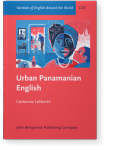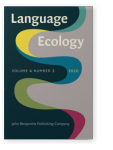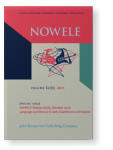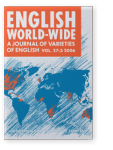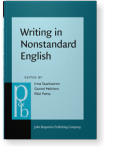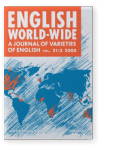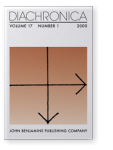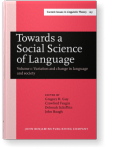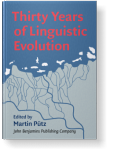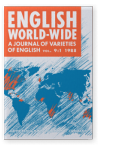Peter Trudgill
List of John Benjamins publications for which Peter Trudgill plays a role.
Book series
Journal
ISSN 2452-1949 | E-ISSN 2452-2147
2015 Chapter 6. Societies of intimates and linguistic complexity Language Structure and Environment: Social, cultural, and natural factors, De Busser, Rik and Randy J. LaPolla (eds.), pp. 133–148 | Article
The uniformitarian principle that knowledge of processes that operated in the past can be inferred by observing ongoing processes in the present is fundamental to historical linguistics. But there is an important respect in which the present is not like the past. Increasing population and mobility… read more
2013 Gender maintenance and loss in Totenmålet, English, and other major Germanic varieties In Search of Universal Grammar: From Old Norse to Zoque, Lohndal, Terje (ed.), pp. 77–108 | Article
I Bergen på hansatida var det nær kontakt mellom to svært like språk, gammalnorsk og mellomlågtysk. Begge desse språka hadde tre genus ... i substantiv. Resultatet av denne kontakten var eit språk, eller snarare ein dialekt, med to genus (Jan Terje Faarlund 2004)
read more2011 A Tale of Two Copulas: Language-Contact Speculations on First-Millennium England NOWELE Volume 62/63 (October 2011): Language and literacy in early Scandinavia and beyond, Schulte, Michael and Robert Nedoma (eds.), pp. 285–320 | Article
2006 Predicting the past: Dialect archaeology and Australian English rhoticity English World-Wide 27:3, pp. 235–246 | Article
The division of the world’s Englishes into rhotic and non-rhotic types is clearly due to the fact that the former are conservative in not having undergone loss of non-prevocalic /r/, whereas the latter have. The beginnings of the loss of non-prevocalic /r/ in English have generally been dated by… read more
2000 Letters as a Source of Data for Reconstructing Early Spoken Scots Writing in Nonstandard English, Taavitsainen, Irma, Gunnel Melchers and Päivi Pahta (eds.), pp. 305–322 | Article
2000 Review of Bell & Kuiper (2000): New Zealand English English World-Wide 21:2, pp. 312–320 | Review
2000 The role of drift in the formation of native-speaker southern hemisphere Englishes: Some New Zealand evidence Diachronica 17:1, pp. 111–138 | Article
SUMMARY Similarities between different geographically separated varieties of a single language may in some cases be due not to characteristics inherited directly from some parent variety, nor to any diffusion or direct contact between them, but to processes of the type which Sapir labelled ‘drift’.… read more
1999 Shades of Things to Come: Embryonic Variants in New Zealand English Sound Changes English World-Wide 20:1, pp. 111–124 | Article
In Trudgill's 1983 follow-up of his 1968 urban dialect survey of Norwich, he showed that a labio-dental approximant pronunciation of /r/ which he had formerly dismissed as purely idiosyncratic, was actually early evidence of a sound change. Using this insight, the authors have taken present-day… read more
1996 Dialect typology: isolation, social network and phonological structure Towards a Social Science of Language: Papers in honor of William Labov, Guy, Gregory R., Crawford Feagin, Deborah Schiffrin and John Baugh (eds.), pp. 3–22 | Article
1992 Norwich revisited: Recent changes in an English urban dialect Thirty Years of Linguistic Evolution: Studies in honour of René Dirven on the occasion of his 60th birthday, Pütz, Martin (ed.), pp. 361–378 | Article
1988 Norwich Revisited: Recent Linguistic Changes in an English Urban Dialect English World-Wide 9:1, pp. 33–49 | Article
